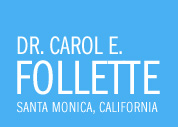If you have gaps in your teeth that you’d like to close, braces are probably the first solution that comes to mind. However, dental bonding is a viable though lesser known option. This post from Carol E. Follette DDS in Santa Monica discusses what dental bonding is and the advantages it offers.
What Is Dental Bonding?
In a dental bonding procedure, a tooth-colored resin material (similar to robust plastic) is applied to the “spaced” teeth and then hardened with a special light. During the hardening process, the resin material bonds to the teeth, with the result being an improved or restored smile.
There are several situations in which dental bonding is a viable option. From a cosmetic dental bonding perspective, this procedure works not just to improve and restore a patient’s smile but also to enhance the appearance of discolored teeth, alter the shape of the teeth, and make teeth appear longer. Dental bonding is also employed as a cosmetic alternative to traditional dental fillings.
Dental bonding is also effective for various preventive measures, like repairing chipped or cracked teeth, or to repair decayed teeth. Moreover, dental bonding is an option when a patient needs to protect part of a tooth’s root exposed due to gum recession.
Procedure
One of dental bonding’s many upsides is that it’s a simple, fast, cost-effective procedure. Unless the bonding is to protect an exposed root or alleviate a decayed tooth, anesthesia is usually unnecessary. The first step involves the dentist using a shade guide to find the ideal resin color to match the patient’s teeth color. When a color match is made, the tooth’s surface is roughened and a conditioning liquid is applied to facilitate a strong bond between tooth and bonding material. The tooth-colored resin is then applied and smoothed until it fits the desired shape, and a laser is employed to harden the resin material. Post-hardening, the dentist trims, shapes, and polishes the bond so that it blends seamlessly with the surrounding teeth.
The entire process takes only 30 – 60 minutes per tooth.
Caring For Bonded Teeth
Another upside to dental bonding is that bonded teeth have no special care requirements. A standard practice of brushing, flossing, and mouthwash is all that’s needed, just like a person would do with non-bonded teeth.
Since bonded teeth can chip, there are some things that patients should avoid: chewing on pens, eating hard food and candy, or using the teeth to open something.
Dental Bonding – Advantages
We’ve covered a few of dental bonding’s advantages, but there are many more. One of the biggest is dental bonding’s affordability, with a total cost that’s lower than other options such as braces. Dental bonds are also low-maintenance compared to braces, which require periodic tightening and often frustrate patients with their penchant for trapping food particles. Dental bonding is also a quick procedure, with complete results delivered in one appointment of three hours or less.
Dental bonding is also comfortable and non-invasive, and it offers superior durability: cared for properly, dental bonds can last years.
Schedule an Appointment
If you’re interested in learning more about dental bonding, contact our dental office in Santa Monica and schedule an appointment. Our decades of experience make us the perfect choice for all facets of tooth care and improvement.
